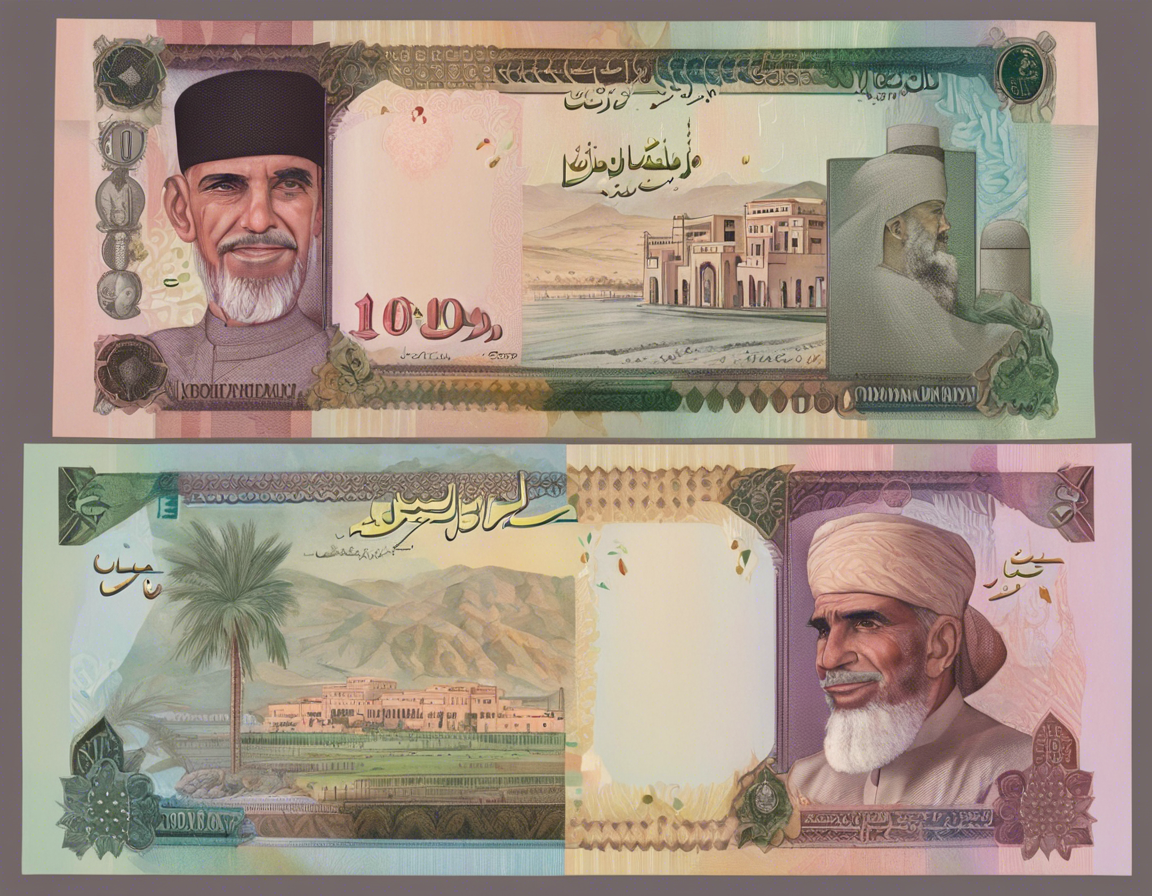Introduction
The Omani rial is the official currency of the Sultanate of Oman, a country located in the Middle East on the southeastern coast of the Arabian Peninsula. The currency is symbolized by the code OMR and the symbol ر.ع. The Omani rial is subdivided into 1000 baisa. In this article, we will explore everything you need to know about the Omani rial, including its history, design, exchange rate, and usage.
History of the Omani Rial
The Omani rial has a rich history that dates back to the 11th century when the Omani dinar was introduced. The dinar was replaced by the Indian rupee in the 1820s, followed by the Gulf rupee in 1959. In 1970, the Gulf rupee was replaced by the Omani rial at a rate of 1 rial to 2.6008 dollars. This change marked the independence of Oman’s currency and the establishment of the Central Bank of Oman as the country’s monetary authority.
Design of the Omani Rial
The Omani rial comes in both coin and banknote form. The coins are denominated in baisa, with denominations ranging from 5 to 100 baisa. The banknotes, on the other hand, come in denominations of 1, 5, 10, 20, and 50 rials. Each banknote features images of prominent Omani landmarks, such as the Sultan Qaboos Grand Mosque and the Al-Mirani and Al-Jalali forts in Muscat. The design of the Omani rial reflects the country’s rich cultural heritage and historical significance.
Exchange Rate
The exchange rate of the Omani rial varies relative to other currencies, with the US dollar being the most commonly used benchmark for comparison. As of [current date], 1 Omani rial is equivalent to approximately [exchange rate to USD] US dollars. The Omani rial is known for its stability and is often pegged to the US dollar to prevent inflation and maintain a steady exchange rate.
Usage of the Omani Rial
The Omani rial is widely accepted in Oman for both domestic and international transactions. It is commonly used for everyday purchases, such as groceries, dining, and transportation. The currency is also used in the tourism industry, with many hotels, restaurants, and shops accepting payment in Omani rials. Additionally, the Omani rial is used for government transactions, trade agreements, and foreign investments, highlighting its importance in the country’s economy.
Frequently Asked Questions (FAQs)
- What is the history of the Omani rial?
-
The Omani rial was introduced in 1970, replacing the Gulf rupee as the official currency of Oman. It is subdivided into 1000 baisa.
-
What is the symbol of the Omani rial?
-
The symbol of the Omani rial is ر.ع, and it is represented by the code OMR.
-
Is the Omani rial a stable currency?
-
Yes, the Omani rial is known for its stability and is often pegged to the US dollar to maintain a steady exchange rate.
-
Where can I exchange Omani rials for foreign currency?
-
You can exchange Omani rials at banks, currency exchange offices, and airports in Oman and other countries.
-
Can I use Omani rials outside of Oman?
- While the Omani rial is primarily used in Oman, some neighboring countries may accept it for transactions, primarily in border areas.
Conclusion
In conclusion, the Omani rial is a symbol of Oman’s rich history, culture, and economic development. Its distinctive design, historical significance, stable exchange rate, and wide usage make it a vital aspect of Oman’s economy. Whether you are a tourist visiting Oman or a businessperson engaging in transactions with the country, understanding the Omani rial is essential for a seamless and enriching experience.
